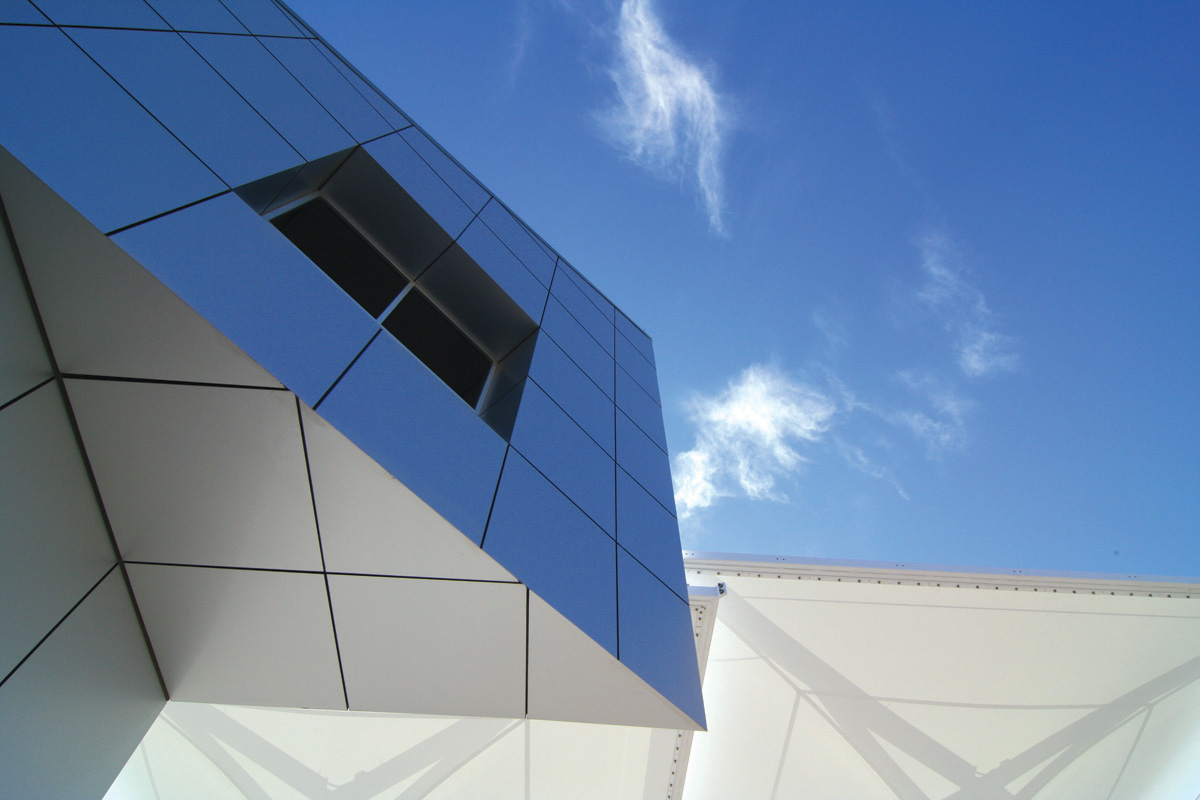By S. Clayton Moore
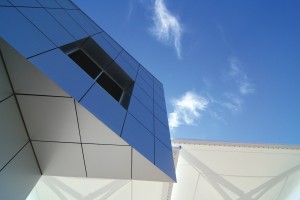
The new multimillion-dollar terminal building includes a futuristic-looking conference center built by Meridian Commercial, LP.
What was once the friendly but antiquated Redbird Airport, in Dallas, is finding new life as Dallas Executive Airport (RBD). An extensive series of improvements have recently been completed and the investment of a massive amount of money—nearly $8 million—and resources into the airport facility over the last five years have created a wholly new entity.
In just the past few months, the airport has opened a brand new terminal building built to the highest standards, a state-of-the-art conference center and a $1.3 million control tower.
The new amenities grew out of a master plan, begun in 2001, that called for a multitude of improvements to the existing airport. In addition to the major developments, the airport also spent $1.3 million on infrastructure improvements that included updating its lighted runway and taxiway signs, taxiway extensions and major airfield electrical system, and enlarging its transient aircraft parking. The new passenger terminal is part of a complex that includes two $4.15 million office buildings totaling nearly 12,000 square feet.
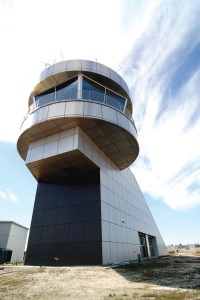
To facilitate development of the property closest to the airport’s terminal building, the airport constructed its new $1.3 million control tower a little further away from the main facilities.
“All of those projects have now been completed, along with a new public apron that allows drivers to drop passengers off much closer to the terminal building,” said Jose Torres, a public information officer and spokesman for the City of Dallas. The city held grand-opening ceremonies for the new and improved airport on April 27, 2006, celebrating with an official ribbon cutting, an aerobatic air show demonstration and tours of the airport.
Moving the control tower was perhaps the most significant and time-consuming project, but relocating it allowed for the installation of water and sewer lines and a newly paved access road.
“Now the tower is away from the terminal, where before it was right next to it,” Torres said. “Moving it away allows for significantly more growth and development of the land near the terminal.”
The airport offers two runways, an FAA traffic control tower, ILS and VFR instrument approaches and visual approach aids (VASI). The upgrades represent the first comprehensive improvements to the airport since the city first took possession of the field from the U.S. Department of Defense in 1946.
While the changing of the airport’s name was contentious in the general aviation community, the city believed that the airport required a new name for a new era in its development.
“The name was changed in February 2002,” Torres recalled. “Although the navigational sign remains RBD for flying purposes, we feel that the new official name more closely reflects the purposes of this modern airport. It’s become a truly contemporary airport for business and corporate travel as well as general aviation.”
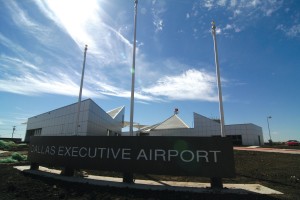
Once a sleepy airport south of the city, Dallas Executive Airport is quickly becoming one of the metro area’s most robust aviation facilities.
In fact, the airport is one of the closest general aviation facilities to Dallas, a fact reflected by the city’s claim that Dallas Executive Airport is just “ten minutes and one stoplight from downtown Dallas.” Obviously, business people are seeing the potential here: private investors have spent more than $9 million on development here in recent years.
These improvements put the airport in a prime position to attract businesses to the airport, and the opportunities are significant. More than 250 acres directly adjacent to the airport are available for lease and development, and the city hopes that business owners and providers of aviation-related services will recognize the possibilities inherent in this growing business area.
“In the grand scheme of things, these business opportunities are designed to stimulate growth in the southern sector of the city,” Torres explained. “Bringing development will certainly bring more economic opportunities for the people of Dallas and contribute to a better quality of life.”
Torres also sees a real synergy between the airport’s heavy traffic—more than 100,000 takeoffs and landings each year—and the economic impact of the surrounding business developments.
“Businesses that support general and corporate aviation will bring job openings and also stimulate more businesses to grow,” he predicted. “When other companies see that there’s a lot of activity here in terms of businesses, restaurants, hotels and other facilities, they will start to realize the attractiveness of Dallas Executive Airport and its nearby business community. That’s the prime idea in developing this area.”

The artistic touches applied to Dallas Executive Airport’s new lobby floor show the quality of the airport’s improvements.
The facility has a new manager taking care of its needs as well. Lana Furra took over as manager of the growing airport in 2005, after a decade of supervising the city-owned, public-use Dallas Heliport/Vertiport on top of the Dallas Convention Center.
The facilities already on the field at Dallas Executive aren’t insignificant. There are already more than 300 hangars in place. Two FBOs, Cutter Aviation and Jet Center of Dallas, offer fuel sales, aircraft storage, charter services and other necessities to the burgeoning aviation community.
In addition, the airport is home to three maintenance facilities, a helicopter flight school and the Dallas police helicopter unit. The airport also hosts an aerial advertisement company as well as IndUS Aviation, a unique aviation company that is resurrecting the T-211 aircraft and re-branding it as the “Thorpedo,” after its creator, John Thorp.
Businesses seeking to open or even relocate to the airport may find some help from the city.
“The target, of course, is aviation-related businesses,” Torres said. “The city’s Office of Economic Development will consider each individual project to see what other needs they have. Some may need infrastructure to build upon. There may be different incentives available depending on the company. There’s a lot of opportunity here.”
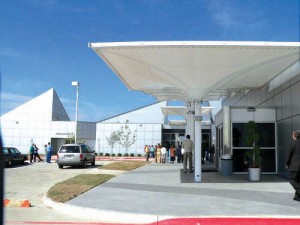
The new passenger apron at Dallas Executive Airport allows busy executives to get in and out of the facility quickly.
To broadcast the opportunities available at the airport, as well as to communicate with the people of Dallas, Dallas Executive Airport is planning many new events designed to attract visitors to the airport.
“We have a lot of plans and there are more in the works,” Torres said. “We want to involve the community so that they understand the purposes of the airport and how this facility benefits them.”
The airport will be holding an open house for the new conference center so that individuals and groups may become familiar with the new facilities. The city is also planning to hold an air show at Dallas Executive Airport in the spring of next year.
“We want the people here to see that the airport is very friendly to the community,” Torres said. “We need their support for future plans and development. We believe that if they understand they’re a critical part of this airport community, they’ll be more likely to support our future projects.”
To tap into the general and corporate aviation sectors, the airport is also planning to hold a fly-in sometime in October.

The airport’s new office facilities include administration offices, a passenger terminal, a new conference center, and will soon house a much-anticipated restaurant.
“The pilots who have never been here will have a chance to come in, look around the facility, and have some fun with their fellow pilots,” Torres said. “Hopefully, the next time they want to come to a Dallas Cowboys game or the state fair or other events, they’ll choose Dallas Executive Airport as their initial destination. From 150 miles out, you can fly here within an hour, park, and get a shuttle downtown. At the end of the day, they can come back, get in their airplane, and go home. It’s that easy.”
The Texas Department of Transportation Aviation Division recognized Dallas Executive Airport as the “2004 Reliever Airport of the Year.” Its supporters are certainly breathing a sigh of relief now that its improvements are open.
“Dallas Executive Airport is open for business and everyone is cleared to land,” said Torres.
For more information about Dallas Executive Airport, visit [http://www.dallascityhall.com/html/dallas_executive_airport.html]











